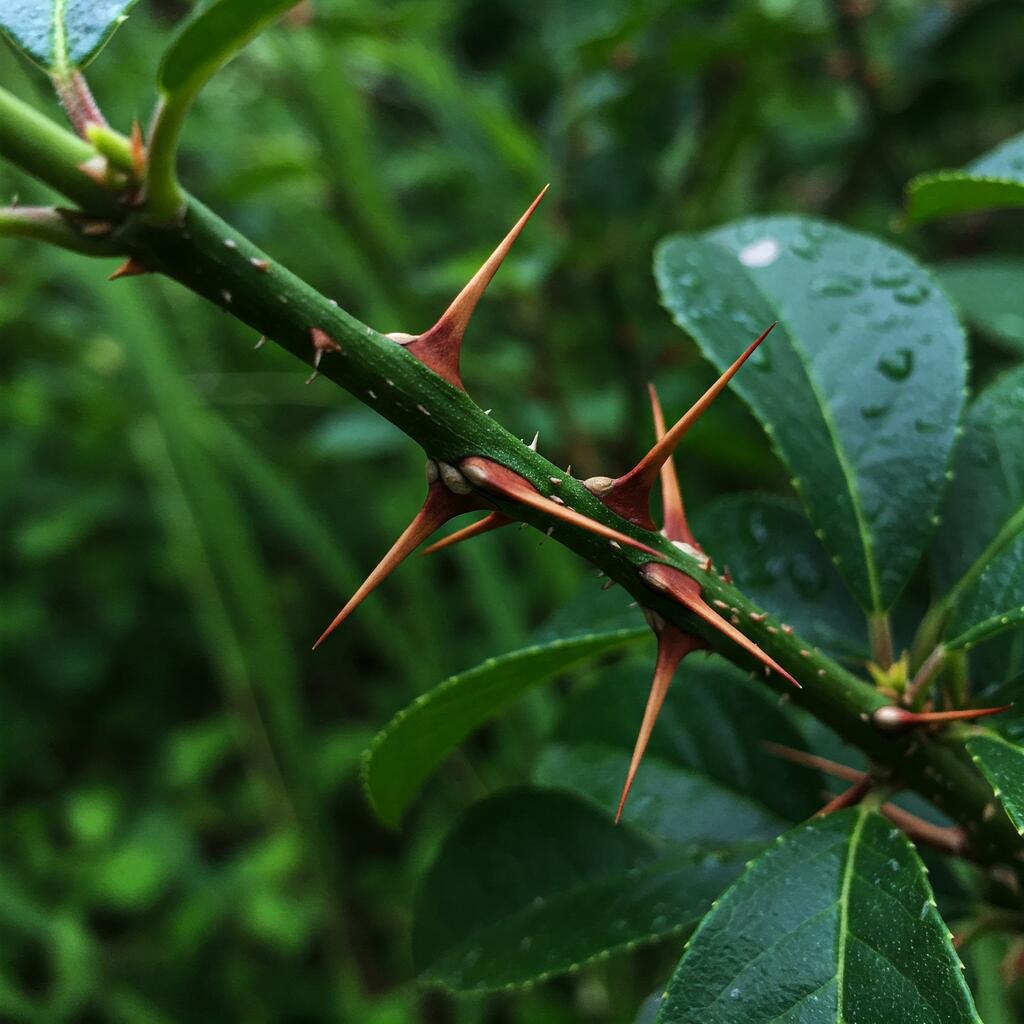
Why Do Plants Have Thorns? Exploring Their Purpose
In this article we will discuss the purpose of spines in plants and what the correlations might be with climate and also other external agents that would have led evolution in that direction. The origin of this article relates to a discussion that took place on our telegram group in which we wondered about the purpose of thorns in plants and what the possible causes or correlations with the environment might be.
Thorns as defence against animals
Thorns, and in general all thorny structures, serve living beings (including plants) to defend themselves against threats. The main threat to plants is undoubtedly insects. If we take a close look at plants where there is a very dense presence of thorns, we immediately realise that these types of structures make it difficult for insects to penetrate the soft, vulnerable parts of the plant.
When the thorns are sparser and stronger, they may contribute, together with a toxicity mechanism, to making the plant more indigestible to herbivores, which, in any case, equip themselves accordingly. Evolution in fact is like a chess game that for every move offers a countermove. Regardless of the vision that one may have of the ecosystem, all living beings, in their own time, try to advance their species in a more or less conscious manner by coping with the difficulties to which the environment in which they live exposes them.
A clear example of this is the tardigrade, which is famous for its ability to adapt to living in the most extreme conditions. This animal is endowed with special abilities that we will probably go into in more detail in another article.
It is not uncommon for thorns to form in those plants that generate fruit or blooms of considerable size in relation to their overall size. Examples include the rose, the chayote and even the more common courgette. Since flowering and fruit require a lot of energy, especially in an organism of limited size, there is a need for protection from animals that might eat the leaves necessary for growth and ripening.
Thorns as defence against the weather
It has been noted that thorns also play a decisive role in the thermoregulation of the plant. In fact, there are desert locations where succulent plants are widespread that are able to withstand very high temperatures during the day and very cold temperatures at night. This mechanism is possible because the thorns of plants (and more generally the vast majority of the elements that make up multicellular organisms) have multiple purposes.
Conifers have, instead of leaves, very elastic needle structures that help them bear the weight of the snow by providing the appropriate surface. A fatty substance on the surface facilitates water run-off, decreases the adhesive capacity of the ice and protects the interior parts from the cold. To avoid the disadvantage of the lower absorption capacity (of sunlight and gases) due to the particular conformation, these structures remain green all year round, thus doubling their effectiveness.
The spines in desert cacti are relieved of the function of absorbing gases and sunlight because there is more than enough of the latter during the day. Conversely, as well as protecting the plant from any predators greedy for its water-rich soft parts, the thorns harness dewdrops on their rougher surface to allow the plant to enjoy the right amount of moisture. The wind of the deserts often brings hairs and straws with it that remain embedded, providing a kind of coat that enables the plant to withstand the extreme temperatures of the night.
The various types of thorns in plants
As any of us can easily imagine, not all naturally occurring thorns in plants have the same form and function. These change according to what I like to imagine as a random evolutionary process that gave reason to the entity whose aberrations favoured existence and reproduction. Nature in fact offers us an extraordinary variety.
Darts are a type of very metabolically active spiny structure that forms on the bark. An example can be seen on some berries and roses.
Leaf thorns are basically an adaptation of the leaf in which the lateral edge usually lignifies to form pointed outgrowths. Although aesthetics is not the purpose of this kind of adaptation, I personally find them very beautiful. In this case we note that the leaf retains its primary role.
Stipule spines generally form in the youngest branches supporting the leaves. The stipules are determined by the contact area between the leaf base and the leaf itself. This can turn into a leaf or into spines. We can observe an example of this in the acacia where they take on a very sharp shape.
The cauline thorns we can appreciate in the very famous hawthorn and whose main function is undoubtedly to protect the plant from hungry animals. They are basically buds that lignify and mutate in a process of lignification.
A curious evolution in nature is represented by a type of thorns called thorny roots. This is a type of mutation that is as fascinating as it is cryptic. At a certain point, these roots stop growing and mutate into thorns. The currently most accepted hypothesis on the function of this kind of thorns is that they have a ventilation function.
In the course of time, humans have modified the natural evolution of plants by creating species that are more convenient to exploit. In fact, cultivated or genetically modified species to develop without thorns are not uncommon. This short article ends here. Feel free to leave a comment to witness your passage and to discuss the elements I have just finished.






















